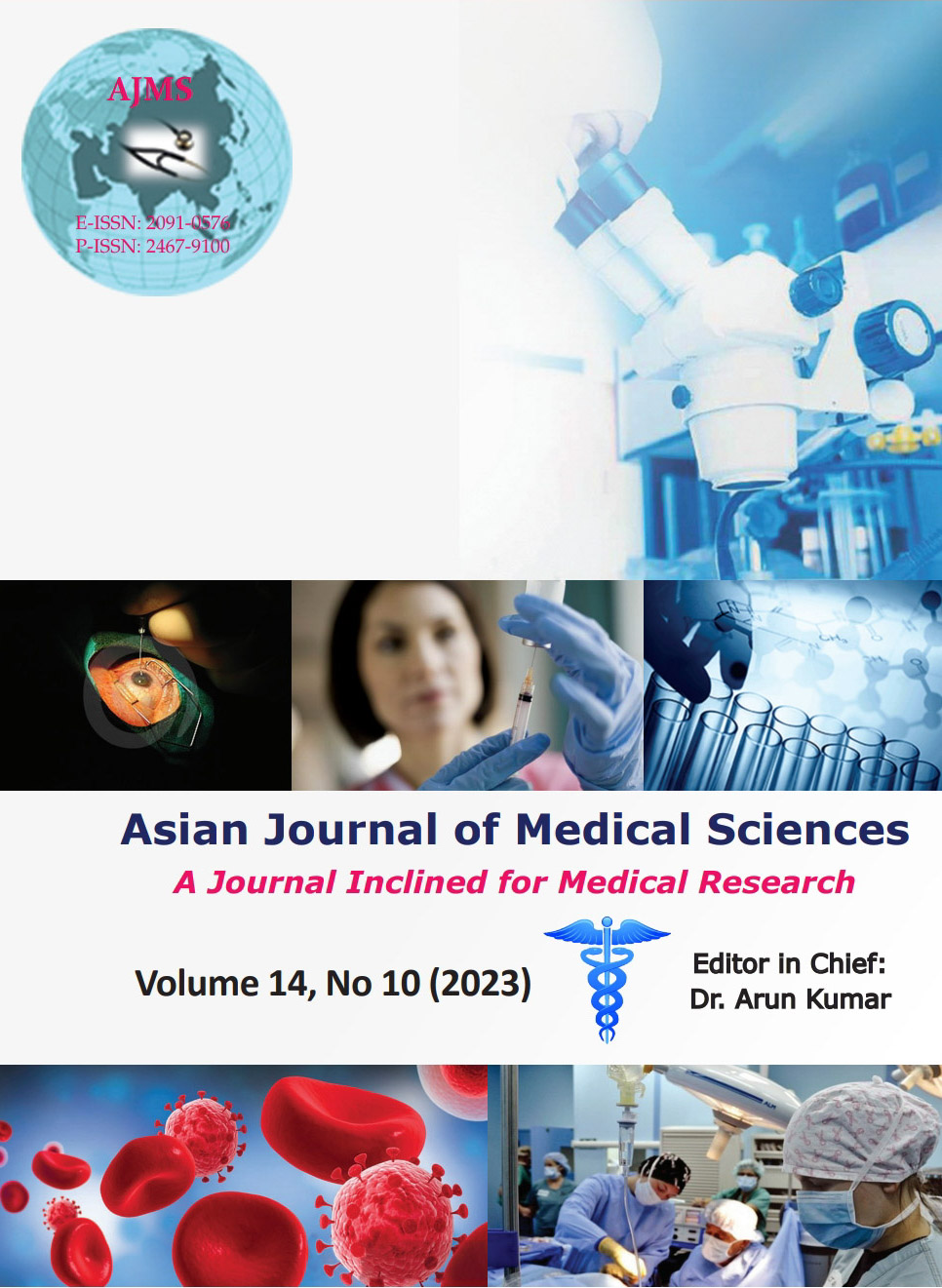A study to assess the self-care practices among hypertensive patients in a tertiary care center, Chennai
Keywords:
Patient compliance; Self-management; Blood pressure controlAbstract
Background: Hypertension is one of the important chronic diseases. Blood pressure (BP) control depends on adherence to self-care practices. Hence, the factors associated with poor adherence can help the policymakers in formulating and directing interventions at specific groups.
Aims and Objectives: The current study was conducted to assess the self-care practices and to explore the factors associated with them.
Materials and Methods: A cross-sectional study was conducted among 119 hypertensive patients who attended the outpatient department between July 2022 and September 2022 using a semi-structured interview schedule containing information on sociodemographic characteristics, morbidity profile, and self-care practices. Data were entered in MS Excel and analyzed using SPSS16. Chi-square test and Fisher’ exact test were used wherever appropriate. P<0.05 was considered statistically significant.
Results: Among the study participants, 19.3% (23) had poor adherence to self-care practices and 80.7% (96) had good adherence to self-care practices (medication adherence=80.5%, regular monitoring of BP=89.1%, alcohol abstinence=94.1%, non-smoking=93.3%, diet modification=71.4%, and physical exercise=45.4%). Sociodemographic characteristics such as age, sex, occupation, education, family income, duration of hypertension, and place of purchase of medicine were found to be statistically significant to at least one of the recommended self-care practices.
Conclusion: Overall adherence to self-care practices was found to be good in the majority of the study participants. Among the self-care practices, adherence to medication, monitoring BP, alcohol abstinence, non-smoking, and diet modification were found satisfactory (>70%). However, engagement in physical exercise still needs improvement. Health education and other interventions to promote physical exercise, especially among high-risk groups are suggested.
Downloads
Downloads
Published
How to Cite
Issue
Section
License
Copyright (c) 2023 Asian Journal of Medical Sciences

This work is licensed under a Creative Commons Attribution-NonCommercial 4.0 International License.
Authors who publish with this journal agree to the following terms:
- The journal holds copyright and publishes the work under a Creative Commons CC-BY-NC license that permits use, distribution and reprduction in any medium, provided the original work is properly cited and is not used for commercial purposes. The journal should be recognised as the original publisher of this work.
- Authors are able to enter into separate, additional contractual arrangements for the non-exclusive distribution of the journal's published version of the work (e.g., post it to an institutional repository or publish it in a book), with an acknowledgement of its initial publication in this journal.
- Authors are permitted and encouraged to post their work online (e.g., in institutional repositories or on their website) prior to and during the submission process, as it can lead to productive exchanges, as well as earlier and greater citation of published work (See The Effect of Open Access).




